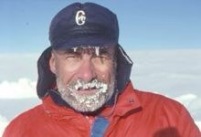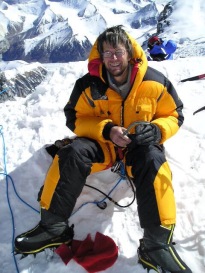In the Victorian era, postmortem photography, also known as ‘mourning portraiture’ was a common practice. Often, these photographs would be sent to family across the country with the expectation that they would be proudly displayed as a way to remember the deceased. Due to the extremely high cost of film in the nineteenth century, death was often one of the few occasions deemed important enough to photograph a relative or friend and violent death resulting in disfigurement was not cause to forgo the photo op. These photos ranged from a portrait of only the deceased subject, to an entire family posing with one, sometimes more than one member who had recently passed. If an entire family was killed in a tragic event, the outcome was a rare, postmortem family photo.
At 8:30pm on January 25,1895 Adolph Hickstein, a piano maker, was playing games with his family in the living room of their home located at 10 1/2 Burt Avenue in Auburn, New York. At 8:30pm the entire family heard a gun shot followed by a cry for help in the residence of their neighbors, the Kellers, who lived at 10 Burt Ave. Immediately, Adolph and his wife rushed next door to investigate. The Hicksteins found the kitchen door open and lying there in the doorway, the body of 30-year-old Emil Keller. As soon as the Hicksteins made the grisly discovery, a second gunshot was heard. Adolph entered the bedroom where he discovered Mary Keller, 29, with her lower body in the bed and her head leaned over the crib of the couple’s nine month old daughter, Anna. There was a large amount of blood coming from Mrs. Keller’s forehead and a 22 caliber revolver clutched in her right hand.
 An article published the following day in The Auburn Bulletin described the grisly discovery in horrific detail, “Going into the bedroom Mr. Hickstein was horrified to see Mrs. Keller, her lower extremities in the bed and her head in the crib of her infant by her bedside, the blood issuing from her forehead. The clothes of the child were in flames which Mr. Hickstein quickly extinguished. Neither he nor his wife, even at that time, entirely comprehended the horrible spectacle presented.” After the fire which was burning nine-month-old Anna’s clothing had been put out, Adolph ran to the residence of Ferdinand Sibus at 24 Elizabeth Street and informed the Sibus family, who had been close with the Kellers, of the grim discovery. Accompanied by Mr. Sibus and a small group of neighbors, Adolph Hickstein returned to the Kellers’ home, the police arriving soon after. A group of men raised Emil Keller’s dead body from the floor and found he had a bullet hole in his left side. They then moved the upper-half of Mary Keller’s body into the bed and found she was still breathing despite a self-inflicted gunshot wound located just above her right temple. Doctors Sheldon Voorhees and J.M. Jenkins who tended to the Keller Family knew there was no chance of recovery for Mrs. Keller. Mrs. Sibus found Anna Keller in the crib next to her mother, crying; She wrapped the baby up and took her back to the Sibus’ residence but shortly after arriving, Mrs. Sibus discovered the baby had been shot on the right side of her stomach and hastily returned to the crime scene where doctors were present. A large crowd of curious and concerned neighbors began to gather outside the Keller home, offering to assist in any way they could. Police asked the crowd to disperse and an ambulance was called to transport Mary Keller to the hospital while Dr. Voorhees drove baby Anna Keller to the same hospital in his own car. When Mary Keller arrived at the hospital, no time was wasted in calling Coroner Tripp to take Mrs. Keller to Gross’ undertaking rooms. Mrs. Keller was still alive when she arrived at the funeral home, clinging to life until midnight. Anna Keller was made as comfortable as possible at the hospital, but she was not expected to survive the bullet which had penetrated her right lung and exited the left side of her body. She died the day following the incident at 6:00pm.
An article published the following day in The Auburn Bulletin described the grisly discovery in horrific detail, “Going into the bedroom Mr. Hickstein was horrified to see Mrs. Keller, her lower extremities in the bed and her head in the crib of her infant by her bedside, the blood issuing from her forehead. The clothes of the child were in flames which Mr. Hickstein quickly extinguished. Neither he nor his wife, even at that time, entirely comprehended the horrible spectacle presented.” After the fire which was burning nine-month-old Anna’s clothing had been put out, Adolph ran to the residence of Ferdinand Sibus at 24 Elizabeth Street and informed the Sibus family, who had been close with the Kellers, of the grim discovery. Accompanied by Mr. Sibus and a small group of neighbors, Adolph Hickstein returned to the Kellers’ home, the police arriving soon after. A group of men raised Emil Keller’s dead body from the floor and found he had a bullet hole in his left side. They then moved the upper-half of Mary Keller’s body into the bed and found she was still breathing despite a self-inflicted gunshot wound located just above her right temple. Doctors Sheldon Voorhees and J.M. Jenkins who tended to the Keller Family knew there was no chance of recovery for Mrs. Keller. Mrs. Sibus found Anna Keller in the crib next to her mother, crying; She wrapped the baby up and took her back to the Sibus’ residence but shortly after arriving, Mrs. Sibus discovered the baby had been shot on the right side of her stomach and hastily returned to the crime scene where doctors were present. A large crowd of curious and concerned neighbors began to gather outside the Keller home, offering to assist in any way they could. Police asked the crowd to disperse and an ambulance was called to transport Mary Keller to the hospital while Dr. Voorhees drove baby Anna Keller to the same hospital in his own car. When Mary Keller arrived at the hospital, no time was wasted in calling Coroner Tripp to take Mrs. Keller to Gross’ undertaking rooms. Mrs. Keller was still alive when she arrived at the funeral home, clinging to life until midnight. Anna Keller was made as comfortable as possible at the hospital, but she was not expected to survive the bullet which had penetrated her right lung and exited the left side of her body. She died the day following the incident at 6:00pm.
Emil and Mary Keller had left their native Zurich, Switzerland five years before the fatal tragedy. First living in Philadelphia, then Washington D.C., Emil was a talented gardener whose work attracted a lot of attention. He moved with his wife to Auburn, New York two years before his murder to work for Mrs. D. M. Osborne, mainly tending to trees in the greenhouse at her residence. When Emil left for work every evening at 8:30 pm, Mrs. Keller would already be in bed asleep. Every evening before he left his home for the Osborne residence, he would go into the bedroom and kiss Mary goodbye. Investigators believe on the night of the murder/suicide, Mary shot Emil as he kissed her. Emil cried for help as he stumbled 35 feet (10 meters) to the kitchen door, on his way to find assistance before collapsing on the floor. This was the gunshot and cry for help The Hickstein Family had heard from their next door apartment. As they raced to the Keller residence, Mary leaned over her daughter’s crib and aimed the gun at Anna’s heart but slightly missed, her clothes being lit on fire by the blast. Mr. and Mrs. Hickstein entered the residence as Mary Keller turned the gun on herself. According to their friends and neighbors, Emil and Mary Keller loved each other and had a wonderful relationship. One friend of the couple described Mary as, “the perfect lady”; She was well-educated, an expert in the piano, violin and zither and well-trained in many other musical instruments; The two had shared a passion and talent for music. However, people also said Mary Keller was insane. One week to the day before the murder/suicide took place, Mary had just arrived home from a hospital where she had spent the last four weeks. Her physician, Dr. Hickey said when admitted, Mrs. Keller “did not talk rationally” and “was all run down, restless and could not sleep. She showed evidence of insanity in that particular but was not violent. Despite the fact that she was not violent and did not make any threats, doctors “thought best to have her undergo treatment”. During Mary Keller’s stay in the hospital, her daughter, Anna Keller stayed with her. Emil Keller boarded with the Sibus’s during the month his wife was in treatment and it seems the family moved homes one week before Mary Keller’s release from the hospital. Previously, the couple had resided at No. 96 South Street and according to reports, had not entirely moved into their new home at the time of their unfortunate deaths. When Mrs. Keller returned home after four weeks of treatment, locals believed it to not be in the best judgment of Doctor Hickey. One doctor at the hospital told reporters he believed Mrs. Keller had needed, “Several months of quiet and rest to recover fully from her run-down condition.”. Emil Keller was happy his wife was back according to Mr. Sibus and said that after she returned, “she was bright and cheerful to her husband and to her friends.”.
A coroner’s inquest took place on the day after the murder/suicide in Undertaker Gross’ funeral home with jurors F. Sibus, Vol Astman, John S. Duanigan, Richard Boehme, William Doyle and James W. Pratt, H. Fliachman. The first witness called was Mrs. Emma Boehme, the wife of Juryman Boehme. She had been hired by Mrs. Keller to assist with the housework. “Mrs. Keller cried hard yesterday morning”, began Mrs. Boehme, “and said she had a stone in her stomach. She was very good and loving and threw her arms about my neck and kissed me. She was in her night dress ready to go to bed and I was talking with her husband when I left. I did the washing the day before. She took care of the baby.”. Next, Dr. J. M. Jenkins was called to provide his findings on the death of Emil Keller; Investigators discovered a hole through his clothing above his heart. The shot had penetrated his heart but Dr. Jenkins was certain he could have been alive for some time before succumbing to his injury. Officer Benjamin B. Roseboom then provided his account of the evening, “I reached the house about the time Mr. Silbus and some others entered. Found Mr. Keller on the floor dead and Mrs. Keller in the bedroom partly out of the bed with the revolver in her hand. Took it out and put it in my pocket. The smoke was fresh in the room at the time I arrived. Heard the neighbors and others say she was insane. The baby was in the crib crying when I entered the home. When Dr. Voorhees arrived he said that the woman could not live.”. Fred Meyer, a piano tuner, then testified that on the morning of the murder/suicide he had been to the Keller’s. He claimed that after he had tuned the piano, Mrs. Keller began playing the piano mechanically and “crying bitterly”. When he questioned her, she asked to change the subject then cheered up and told him she felt well. Fred Meyer that although the family was always happy and pleasant, Mary was always worried for the safety of her child, “very fearful that something might happen to it.”. The couple had a child together several years before Anna was born but the infant died after only thirteen days. This could have greatly contributed to Mary’s fear for Anna and her alleged “insanity”. John Thomas of Burt Avenue was called next to give his testimony. When the Kellers had first moved to Auburn, New York, they had lived with Mr. Thomas for a few weeks. He said, “They were always happy. She was a perfect lady.”, before revealing the reason behind Mary’s hospitalization and the family’s sudden move, “I met Mr. Keller on Christmas and wished him a Merry Christmas. He said it was a bad Christmas for him, that his wife was at the hospital. I asked what was the matter. He said that she was out of her mind, that she imagined someone was in the house and was going to kill her and the baby. He said he would get her out of that house as soon as possible. I met him yesterday and he said that his wife was feeling better but it would take some time before she would be well again.”. The inquest adjourned for 45 minutes after John Thomas’s testimony because bizarrely, Dr. Voorhees had wandered off and could not be found. Where he was found remains a mystery; A mystery which will haunt me to the day I die (I spent over an hour searching for the answer to that). With Dr. Voorhees located, Coroner Tripp turned things over to the jury who agreed, “That the deceased came to his death by means of a ball from a pistol at the hands of Mary Keller.”, but made no mention of the mental state they suspected her to be in at the time.

The Keller Family Grave, Fort Hill Cemetery in Auburn, New York
The Keller Family funeral took place two days after the murder at 8:30pm at the Universalist Church. The casket was special ordered, 4 inches (10cm) deeper and 9 inches (23cm) wider than an ordinary coffin so that Mary, Emil and Anna could be buried together. The bodies were thoughtfully placed so as to hide any wounds; Mary’s head rests on Emil’s left shoulder in order to hide the gunshot wound above her right temple and the slight discoloration of her right eye.
Below is the original article from The Auburn Bulletin reporting the incident, courtesy of FultonHistory.com
Check out the NEW BOOK by The Post-Mortem Post’s Head Writer ‘Horrible History: Mass Suicides’ AVAILABLE NOW on Amazon Kindle!
If you love The Post-Mortem Post, please consider contributing on Patreon.com!
Follow us on Twitter @PostMortem_post & Like The Post-Mortem Post on Facebook
If you enjoyed this article, you might also like Life Before Death: Overcoming the Fear of Death Through Modern Postmortem Photography, Burying the Dead is Killing the Planet, Everybody Poops: The Postmortem Edition, and Pray the Decay Away: Incorruptible Corpses and Other Forms of Natural Postmortem Preservation
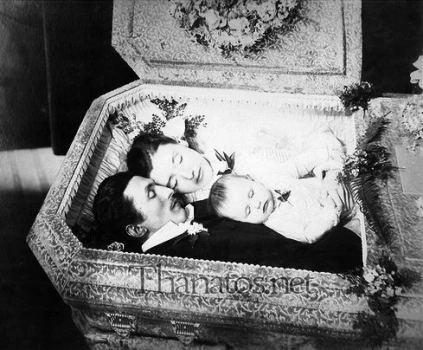




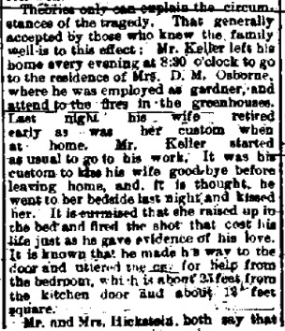


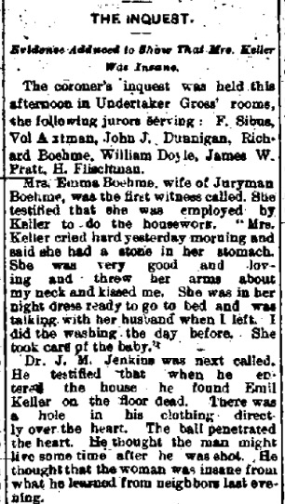
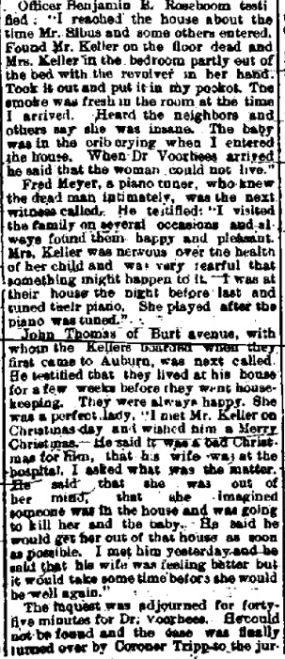

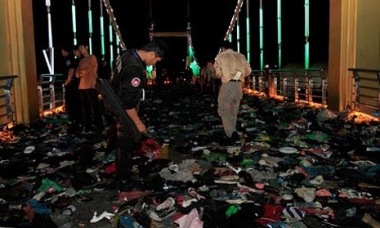






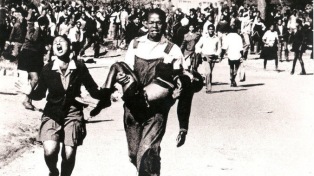
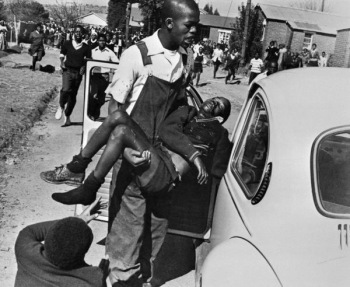


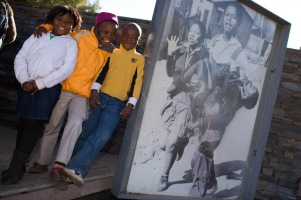












 The south side of the mountain is considered to be “cleaner”. Most bodies on the southern, Nepalese side of the mountain have, at the very least, been removed from the main path. Only recently, helicopters have become able for use in the recovery of bodies; However, the body must be moved as far as a base camp on the south side of the mountain. The north side, which is controlled by the Chinese government, does not allow helicopter use for any purpose. The north side is notorious for being the more dangerous route with a far higher death rate than the south. On the northeastern side of the mountain lies “Rainbow Valley”. Despite its Care Bear-esque name, the area was dubbed as “Rainbow Valley” for the numerous corpses dressed in multicolored down jackets which line the main path.
The south side of the mountain is considered to be “cleaner”. Most bodies on the southern, Nepalese side of the mountain have, at the very least, been removed from the main path. Only recently, helicopters have become able for use in the recovery of bodies; However, the body must be moved as far as a base camp on the south side of the mountain. The north side, which is controlled by the Chinese government, does not allow helicopter use for any purpose. The north side is notorious for being the more dangerous route with a far higher death rate than the south. On the northeastern side of the mountain lies “Rainbow Valley”. Despite its Care Bear-esque name, the area was dubbed as “Rainbow Valley” for the numerous corpses dressed in multicolored down jackets which line the main path.
